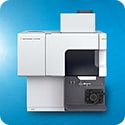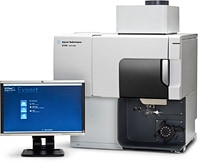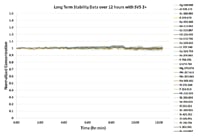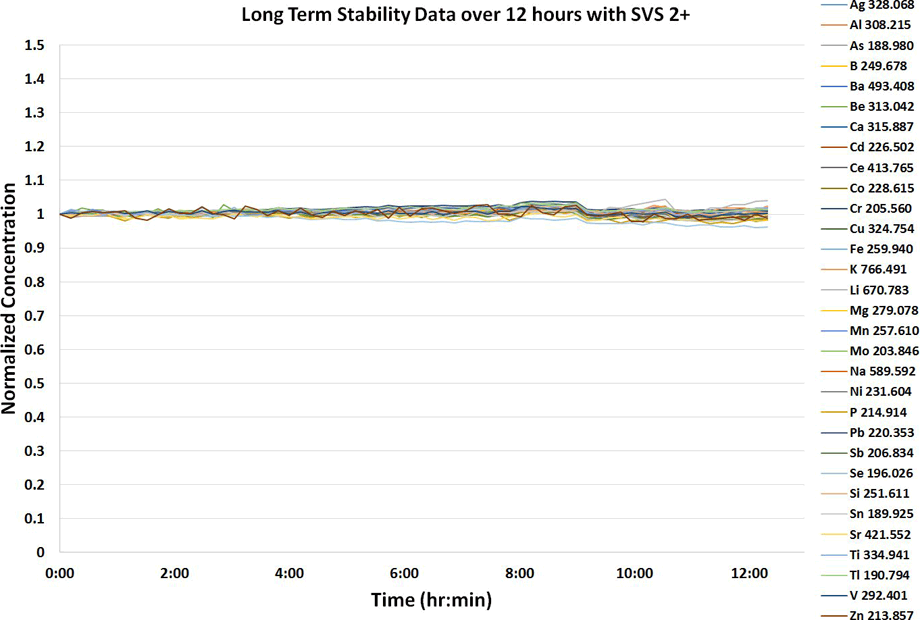Access Agilent eNewsletter, September 2014
>> Update My Profile | Subscribe to Access Agilent | Article Directory

Reduce argon consumption and increase sample throughput with Agilent’s revolutionary 5100 Synchronous Vertical Dual View ICP-OES
By Ross Ashdown
Agilent ICP-OES Product Manager
Inductively Coupled Plasma Optical Emission Spectroscopy (ICP-OES) is a well-established workhorse-technique that is used daily in thousands of labs around the world for trace metals analysis of a wide range of sample types. The success of ICP-OES is due to its exceptional stability, fast multi-element analysis, and high sample throughput capabilities. In recent times, developments in Dual View (DV) plasma optics have targeted improving the flexibility of operation of ICP-OES, aiming to increase upper measurement limits (linear dynamic range) and reduce interferences for some elements using the traditional "radial" view of horizontal plasma. DV plasma optics also add "axial" viewing of the plasma to improve the sensitivity for elements such as arsenic, selenium, cadmium and lead.
Conventional DV-ICP-OES instruments, however, have forced users to make compromises, particularly in terms of robustness and speed. As stated, most conventional DV systems use a horizontal torch rather than the more robust vertical torch orientation. This compromises torch lifetime, and also limits the matrix handling capability of the system. Speed is compromised due to the need to measure radial and axial views sequentially, with up to four measurements required per sample.

Figure 1. Agilent 5100 Synchronous Vertical Dual View ICP-OES.
Faster sample throughput and lower gas consumption
The innovative Agilent 5100 Synchronous Vertical Dual View (SVDV) ICP-OES with Dichroic Spectral Combiner (DSC) technology eliminates these compromises by combining axial and radial light from the entire wavelength range in a single measurement (Figure 1). Together with the high-speed VistaChip II CCD detector and the innovative SVS 2+ switching valve, the 5100 delivers the fastest sample throughput and the lowest gas consumption per sample of any ICP-OES. Additional technologies such as the vertical torch with axial viewing and Cooled Cone Interface (CCI) also contribute to the instrument’s ability to analyze high % Total Dissolved Solids (TDS) samples and excellent linear dynamic range (LDR). These performance benefits minimize the need for additional sample dilutions or multiple readings of the same sample, further improving sample throughput.
Unparalleled performance for challenging applications
Many food-testing laboratories work within a regulatory framework to monitor a range of specified elements in a large number of samples on a daily basis. As an example, the Agilent 5100 SVDV ICP-OES was used to analyze two diverse food products. First, a method was developed for the analysis of a certified whole milk powder according to the Chinese standard method GB 5413.21—2010. Trace toxic and major nutrient elements were determined in a single measurement of NIST Milk Powder 8435 Standard Reference Material (SRM), without ionization buffers. Detection limits were better than required by the GB method, with recoveries ranging from 92%-107%. High sample throughput was observed, with quicker sample measurement delivering considerable gas savings (Table 1). Plus, the vertical torch resisted contamination and sample build-up, despite the high dissolved solids in the samples, and delivered stable and robust analytical performance.
Element (nm) |
MDL (mg/100g) |
GB-specified DL (mg/100g) |
Certified value (mg/kg) |
Measured value (mg/kg) |
Recovery (%) |
|---|---|---|---|---|---|
K 766.491 |
0.17 |
0.7 |
13630 |
13070 |
96 |
Ca 315.887 |
0.01 |
0.7 |
9220 |
9750 |
106 |
P 213.618 |
0.02 |
N/A |
7800 |
7160 |
92 |
Na 589.592 |
0.01 |
1.6 |
3560 |
3530 |
99 |
S 181.792 |
0.11 |
N/A |
2650 |
2650 |
100 |
Mg 279.078 |
0.01 |
0.2 |
814 |
749 |
92 |
Zn 202.548 |
0.0006 |
0.002 |
28.0 |
28.9 |
103 |
Sr 421.552 |
0.00005 |
N/A |
4.35 |
4.37 |
101 |
Fe 259.940 |
0.001 |
0.003 |
1.8 |
1.9 |
107 |
Cu 327.395 |
0.001 |
0.002 |
0.46 |
0.46 |
100 |
Mo 204.598 |
0.003 |
NA |
0.29 |
0.27 |
92 |
Mn 257.610 |
0.0003 |
0.005 |
0.17 |
0.18 |
103 |
Table 1. 3-sigma MDLs and recoveries from the analysis of NIST Milk Powder 8435 SRM.
In a separate study, certified bovine liver samples were analyzed and an excellent linear dynamic range – from trace levels up to 500 ppm for Na and K – was achieved from a single reading. Accuracy was within 5-6% of the certified values for major and trace elements and spike recoveries ranged from 99-110% when a 100 ppb spike was performed for elements that were below the limit of quantification.
 Enlarge
Enlarge
Figure 2. Long-term stability plot over 12 hours.
Improve productivity and reduce costs
Environmental monitoring of water, wastewater and solid wastes for pollutants often involves analyzing many hundreds of samples per day via ICP-OES, so laboratories are constantly looking to improve productivity and reduce operating costs without sacrificing analytical performance or ease-of-use. In our second example, an Agilent 5100 SVDV ICP-OES fitted with a SVS 2+ Switching Valve System and SPS 3 autosampler was used to analyze water samples per US Environmental Protection Agency (EPA) method 200.7. A sample-to-sample analysis time of 58 seconds was achieved with argon consumption of <21 L per sample. This is 55% faster than conventional DV-ICP-OES instruments, with approximately 50% less argon consumption per sample. Excellent long-term stability was achieved over 12 hours, with all elements having recoveries within ±10% and a %RSD of less than 1.3% over the duration of the run (Figure 2).
Simplify your workflow
For all users, method development has been simplified with intuitive Agilent ICP Expert software and DSC technology. The unique Agilent DSC technology selects and combines light from the axial and radial views, so now for the first time all wavelengths can be captured in one measurement for higher precision and faster turnaround. The 5100’s robust vertical torch will enable analysts to measure even the most challenging samples – from high matrix to volatile organic solvents – with a high degree of confidence.
To learn more about the Agilent 5100 ICP-OES, read Application Note 5991-4821EN, view our technology video, or register for the on-demand webinar.
THE Leader in atomic spectroscopy innovation
The Agilent 5100 Synchronous Vertical Dual View ICP-OES is just one of the solutions that makes us a leader in atomic spectroscopy innovation. Our comprehensive portfolio of products covers such diverse application areas as environmental, food safety, energy, chemical, materials testing, and semiconductor analysis. What’s more, all of our solutions are backed by unparalleled service and support.
>> Update My Profile | Subscribe to Access Agilent | Article Directory
